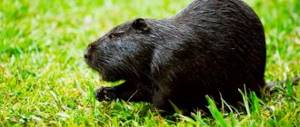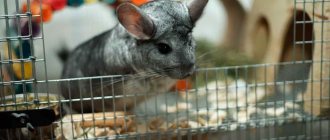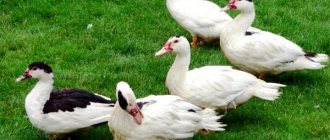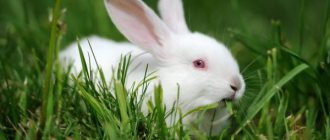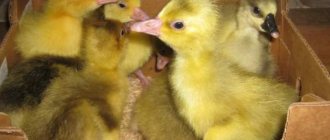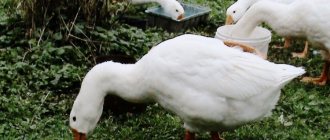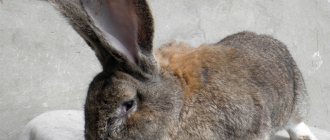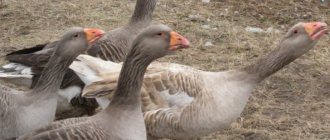Something about chinchillas
The chinchilla is an affectionate animal that does not smell and does not require a huge territory for breeding. All he needs is good care and regular feeding. Many farmers involved in breeding chinchillas talk about a special formula for success that will make this business profitable: selection, quality feed, genetics, microclimate, regular and proper feeding, as well as a piece of your soul.
The homeland of chinchillas, beautiful animals with valuable fur and tasty meat, is South America. The natural habitats of chinchillas are northern Chile, Argentina, Peru, and the Andes. Until recently, these fluffy creatures were subject to intensive (one might say industrial) hunting, which was the reason for the sharp decrease in the number of the family.
Chinchillas in the photo
Habitat conditions are rocky, dry mountain areas, with preference given to northern slopes. Empty stones and rocky crevices serve as a refuge for them; if none are found, the animals dig holes. Rodents have perfectly adapted to mountain life, as they live even at an altitude of 5 thousand m above sea level. seas. Chinchillas are monogamous animals and live in colonies. The average life expectancy of furry cats is about twenty years. The main way of life is nocturnal.
| Interesting! From one bulb of chinchilla fur, up to 70 villi grow, each 12 microns in size. No other animal in the world can boast such amazing fur! |
Wild chinchillas feed on typical plants; they can also eat lichens, shrubs, mosses, cacti, tree bark or insects.
Chinchilla fur is considered royal. It even has its own history: having appeared in Europe (the rodent was brought from Spain), only the highest nobility began to wear it. Moreover, the amount of fur on the uniform that officials were allowed to wear was determined by his status and rank. And princes under 18 were not even allowed to wear it.
The mass extermination of chinchillas (what else can you call such a hunt!) began at the beginning of the 19th century. But after the animal was included in the International Red Book, hunting for chinchillas is prohibited. Thanks to this law, chinchilla fur has become even more expensive, which is why poachers still continue to exterminate rodents.
| Interesting! According to Wikipedia, the first person to breed chinchillas in captivity was US engineer Mathias F. Chapman in 1923. |
How to recognize an animal
The chinchilla, in its size and shape, is very similar to a squirrel: the same curved spine, long hind legs and short front legs. She moves almost the same way as a squirrel - by jumping.
The animal's head is triangular in shape, its neck is short, so it is almost invisible. But the ears are clearly visible - they are large and almost naked. In nature, animals most often have black eyes, but on chinchilla farms and at home, almost all chinchillas kept have red eyes.
The peculiarity of rodents is their sharp, constantly growing teeth (they have 24 of them). They require regular grinding, so the animals simply need roughage. When raising chinchillas, many farmers forget about this fact, which leads to the formation of growths on the teeth (hooks), which injure the cheeks and tongue of rodents. If this happens in the wild, the animals die, but if on a farm, they have to be treated for a long time.
Is chinchilla farming a profitable business?
The relevance of this business consists of the following indicators:
- Low cost of fur (raising one male will require no more than a hundred rubles, and its cost by 2-3 months can be 3,000 - 12,000 rubles).
- You can run a business without experience in breeding chinchillas - it’s simple.
- You can save on cages for raising chinchillas by making them yourself.
- Availability of sales of chinchilla fur - fur salons, etc.
- Well, the final key point is low competition in the chinchilla industry.
At home, it is difficult to organize a profitable business selling chinchilla skins or meat. It is impossible to keep more than 3-4 individuals in an apartment or even a private house. In such conditions, the female most often gives a minimal offspring - one baby. The area needed to keep chinchillas for industrial breeding is from 50 sq. m. This is a caged animal. But since the cages can be placed in tiers (2-3 rows at the top), 80 chinchillas can be placed in 10 square meters. m.
| On a note. When growing, at least a third of a square meter should be allocated for one chinchilla. m. cell area. |
Thanks to such small areas, chinchillas can be quickly isolated in the event of a dangerous situation, for example, an epidemic. These animals are not vaccinated. The only vaccination that is given to chinchillas is against ringworm.
Is it profitable to breed chinchillas for sale: reviews from owners, diagram
Maxim, Vladivostok, 38 years old
The idea of breeding chinchillas for sale came to us spontaneously. Before this, there was just a couple living with us, and the female was pregnant. We bought the necessary cages for them (at first we lived together), various food and other supplies. Initially, together with the animals, it cost us 25 thousand rubles. The first birth went well - 2 puppies. We also spent on a cage and food. During subsequent births, the female decided to eat her puppies. Next time we watched all night. After about 1.5 years, in the end we already had 3 females with 2-3 litters. It was necessary to install a split system because the livestock had grown and they did not like the heat. We did this in the apartment. But trouble struck again - the cubs began to get sick, and the slightest changes in food led to dulling of the fur. Vitamin supplements corrected the situation a little. But expenses began to rise, and there was no income yet. My wife and I got into debt. In total, we spent more than 600 thousand on their maintenance. We were able to sell all the chinchilla puppies, and then decided to sell the adults as well. But at absolutely not the price we expected. And we earned as much as 156 thousand rubles from them! Draw your own conclusions.
Approximate diagram
Victoria, Ekaterinburg, 31 years old
I have had chinchillas for over 5 years. I breed them not so much for money, I just like these animals. We have a private house - there is a lot of space, my husband made 2 large display cases himself. For the first 3 years, selling puppies did not bring much profit, but we did not strive for this. Then we kept another pair for ourselves, space allowed. But we gave them a whole room. There were complications, but my trusted veterinarian could give advice over the phone and even come at night. The second firstborn gave birth for a very long time. I can’t give exact numbers, but on average we spent about 20 thousand on them. This includes all materials. But, I repeat, we did a lot on our own - significant savings on these same cells. And now, after 5 years, in total we earned a little more than 30 thousand from the sale. Basically, we sold it to maintain the house at an affordable price. Therefore, my conclusion is that you can make money on them if you have a lot of space and this is not your specific goal. Gradually, gaining new knowledge, you can expand your production.
Where to begin
If you really want to start breeding chinchillas, organize a small farm - up to 50 individuals. It will require no more than 25–30 square meters. m. Provide the animals with conditions as close to natural as possible:
- air humidity – not less than 55% and not more than 60%;
- temperature – lower maximum – 13 degrees Celsius, upper – about 20 degrees Celsius;
- no direct sunlight (in nature they live on the north side) - otherwise the animals’ fur will lose its value;
- make drinking bowls, cages, feeders;
- There must be sand in every cage - the animals clean their fur coats with it.
| On a note. Chinchillas can be kept in any room. But there must be thermal insulation, the absence of drafts is important, maintaining a temperature of 20 degrees both in winter and in the summer months. |
The minimum height of a standard cage is from 45-50 centimeters; if the cages are made a little lower, the chinchillas will be injured, thereby damaging the fur. For the cages, a galvanized mesh of 1.5x2 centimeters is used. Minimum cage dimensions: length – 0.8 m, height – 0.5 m, width – 0.6 m.
Drinkers and feeders should be located in the front of the cage to make it convenient to add water and feed the chinchillas.
Under each cage, pull-out trays must be installed, which are filled with tyrsa or special fillers to maintain cleanliness. When breeding chinchillas at home, they need to have a spacious cage. It is installed so that the animals do not feel drafts, and also away from heating devices. These rodents do not like either hypothermia or overheating: the consequence of overheating is the death of animals, and drafts lead to respiratory diseases. Rodents are active at night, so placing cages in bedrooms is not recommended. The cage should have many shelves, steep slopes, passages - chinchillas lead an active lifestyle. Be sure to equip your chinchilla's home cage with a water bowl, hay feeder and feeder. Although rodents love to live in shelters, it is not necessary to put houses in cages.
| On a note. Place rooms where you plan to keep chinchillas separately. In this way, you will comply with sanitary standards and avoid possible stress for animals. |
If it is planned to contain individuals of both sexes in a cage, then the addition of males is done extremely carefully: at first they are kept side by side, but in separate cages - they must get used to each other. Females, such cases are known, can kill males. If the rodents are accustomed to each other, put them in the same cage.
Rules for breeding chinchillas
There are a number of simple rules for beginning farmers:
- Three-month-old animals are placed in separate cages
- To catch an animal, you need to grab it by the tail or ear.
- Chinchillas need enough sand to keep their fur coat clean.
- When organizing a farm, sound insulation should be provided.
- Among rodents, inbreeding is prohibited.
- To obtain healthy offspring, it is sometimes necessary to replace old males with new ones.
- Mating before one year of age is undesirable.
- A pregnant female gains 50 grams every 2 weeks; to understand whether she is fertilized or not, it is enough to monitor the individual’s weight.
- Before giving birth, the male is separated from the expectant mother.
Care, feeding
Raising chinchillas is not an easy task. Starting from setting up the animals’ place of residence until the day of their sale, a lot of time will pass, during which you will have to make a lot of effort. In particular:
Decide on your diet
What to feed your chinchilla? It's not as difficult as it might seem. Chinchilla food should consist of two parts:
- the first 50% of all feed is dry grass, hay, and hay is a must. It is served with a hay feeder, as the dust from it can spoil the fur of chinchillas. Dry herbs include nettle, dandelion, clover and plantain. Other herbs are also possible, as long as they are not poisonous, but giving such food is also necessary.
- the second 50% of food is dried fruits, special food and tree bark, and if you give your chinchilla dried fruits, then only well-dried ones.
In general, an adult animal eats no more than 30 g of various food per day. Think carefully about the issue of feeding rodents, because the better you feed chinchillas (the better quality), the more expensive their fur will become.
Photo of feeding domestic chinchillas with granulated food
Keep chinchillas clean
A chinchilla should always be clean, just like its cage. If they talk about bathing rodents, they mean cleaning their fur with sand (they don’t need water!). The chinchilla bathes on its own. If there are several animals in the cage, then they can really cope with this task on their own. But when you only have one rodent, it will need your help: combing and trimming matted fur.
Coarse-grained river sand is unsuitable for chinchillas - finely dispersed sand is needed (zeolite is best - it does not cut off the villi). Breeding and keeping an animal clean means:
- change into shavings in the cage - weekly;
- fry the sand, after passing it through a sieve - every month;
- carry out treatment (disinfection of the cell) - once every six months.
Photo of chinchilla and chinchillas
And in order for the animal’s fur to be truly beautiful (marketable), try to hold the chinchilla in your hands as little as possible: if you pick up a rodent, then grab it by the ear or tail. Chinchillas living at home - in apartments - need regular walks. These animals are extremely mobile, so when bred they will not be able to withstand being kept in a cage all the time. Try to let them into the room every day (at least for half an hour). At the same time, keep an eye on them: that’s why they are rodents: they chew everything – furniture, clothes, shoes and even electrical wires.
When do chinchillas reach maturity?
Chinchillas that are 5 months old are considered sexually mature. But females are fertilized only at 10 months of age. The number of fertilizations per year is no more than three. After each lambing, the female gives birth to one to three cubs.
| On a note. Correct pair selection: inbreeding of chinchillas is not allowed, chinchillas containing the “velvet” gene in their genotype are not crossed (half of the offspring of such animals die), only adult and healthy chinchillas are taken to produce offspring. The optimal ratio of male chinchillas is 1 to 3–4 females. |
Actually, breeding and keeping rodents is based on 3 elephants - birth rate, fur quality, survival rate. It is the quality of the fur that determines the health of the chinchilla: the better it is, the healthier the animal itself. And the quality of the fur, as a result, depends on what the chinchilla was fed, that is, on its diet. Experienced farmers have a saying: if you want to know what a chinchilla’s diet was, look at its back (fur). A real specialist, just looking at the “casing”, will immediately tell what kind of diet the chinchilla had and whether the feeding technology was followed.
Maintenance technology and specifics of reproduction
Issues related to breeding work in the process of breeding chinchillas are especially interesting at the stage of introducing breeding; at first glance they seem not entirely clear and a little confusing, but in fact this is not the case.
Reference:
- — The female has up to 3 lambings per year;
- — Gestation period — 110-117 days
- — In one lamb — from 1 to 6 babies;
- - On average, 6-8 babies per year per female - a wonderful result;
- — Standard family: 4 females and 1 male.
Breeding selection work is work whose purpose is to obtain and consolidate the desired characteristics and properties of chinchillas in the offspring, as well as to increase productivity. This section is of particular importance for the animal fur business, because increased productivity gives an absolute advantage to the farm in all areas of activity: from increasing lactation capacity to preserving the desired characteristics of fur raw materials.
Issues related to breeding work are especially interesting at the stage of introducing breeding; at first glance they seem not entirely clear and a little confusing, but in fact this is not the case. Observance of simple axioms will develop selection skills every day, especially in our time, when information technologies do everything for and for humans. They took advantage of such opportunities when they approached the simplification and improvement of the pedigree selection system.
Together with veterinary medicine specialists, as well as professionals in the field of animal husbandry, a system of animal care and selection has been developed. RFS is a unique system for recording chinchillas and farms, containing all the information, as well as the breeding fund of the farm (kennel) performs all the necessary functions for their maintenance, storage and data exchange. She performs all functions down to the smallest detail, from selecting animals to keeping records of vaccinations, relocation, feeding, etc.
Polygamous breeding consists of keeping chinchillas using technology that includes: A polygamous cage - a cage designed for five individuals - for 4 females, who have their own individual cage and a male, who has only a conditional passage between the cells, that is, in fact, he settles with these females, where it feeds and produces offspring. The cage is folded in such a way that only the corridor is connected. In this corridor, the male moves without interference, while the females do not have this opportunity. This is due to the fact that females have a special ring, larger in diameter than the conventional corridor.
Caring for new born chinchilla babies
The main and no less important advantage of chinchillas is that they are born fully developed: with open eyes and teeth, also covered with hair, and oddly enough, on the very first day they move independently around the cage, which is usually not typical for other types of rodents.
In the first days after birth, the main food of newborns is mother's milk. Milk contains a large amount of useful substances necessary for the good development of babies. Milk also contains antibodies, which in turn perform a protective function and protect children from various diseases. Milk contains 14% fat and 1.7% carbohydrates.
The amount of milk produced also depends on the quality of food, so the female needs to be fed as best as possible during this period, given high-quality food, after giving birth for 14 days, give the males a small piece of fresh or dried apple once a day. After a certain period of time, which is about 15-20 days, children begin to eat solid food (pellets) for the first time, which the female feeds on, but still milk remains an integral and main food for up to two months, namely until the baby is transferred from the female to another cage.
to contents ⬆
Polygamous type of keeping chinchillas
In this section of the article we will talk about the technology of polygamous chinchilla keeping
The cells are arranged separately in such a way that they form a so-called “Cabinet”. Breeding work starts from the moment the animal is born - this is the registration of the pregnancy of the female who gave birth to this animal. Further, at the stage of growth and puberty, he is faced with breeding certification and determination of belonging to the Prof or Pet class.
This chinchilla assessment is a review of rats at 2 and 6 months of age.
When does fur maturation occur?
The “ripeness” of chinchilla fur is judged by several parameters. Moreover, in females and males the period of fur maturity begins at different times:
- in the female - at the age of 6.5 to 7 months, weighing 470 grams;
- in a male - at the age of 7.5 to 9 months, with a weight of 500 grams.
But the length of females and males whose fur is “ripe” is almost the same - from 19 to 27 centimeters. To select a pair for further breeding of animals, the birth rates of the chinchillas’ parents are taken into account. If they are at a sufficiently high level (more than 2-3 cubs per lambing), then they can be used for further breeding, because the productivity of individuals is transmitted genetically.
| Advice. For farm (industrial) breeding of chinchillas, the following feed composition can be recommended: dry grass – 64%, oats – 14%, wheat and barley – 20%, milk powder – 1.6%, bone meal – 0.4. Chinchillas are fed granulated food. |
As you can see, keeping chinchillas both at home and on farms is not too troublesome. Cotton and oil are called white and black gold, then the fur of small chinchillas, many specialist farmers are sure of this, may well become “gray gold”.
Profit calculation
20 families consist of 60 females and 20 males. On average, one female gives birth to 3-5 babies, and gives birth 2-3 times a year. In the worst case, each female will produce 6 animals per year, which is 360 individuals. Selling them for $50 would give you $1,800 a year. This is the simplest method of implementation, so the indicated profit is minimal. When selling skins and meat, income can increase several times.
Along with the minimal costs of maintaining and purchasing food, we can conclude that chinchilla breeding is a profitable business that does not require much labor or special training. Any new entrepreneur can do it.
